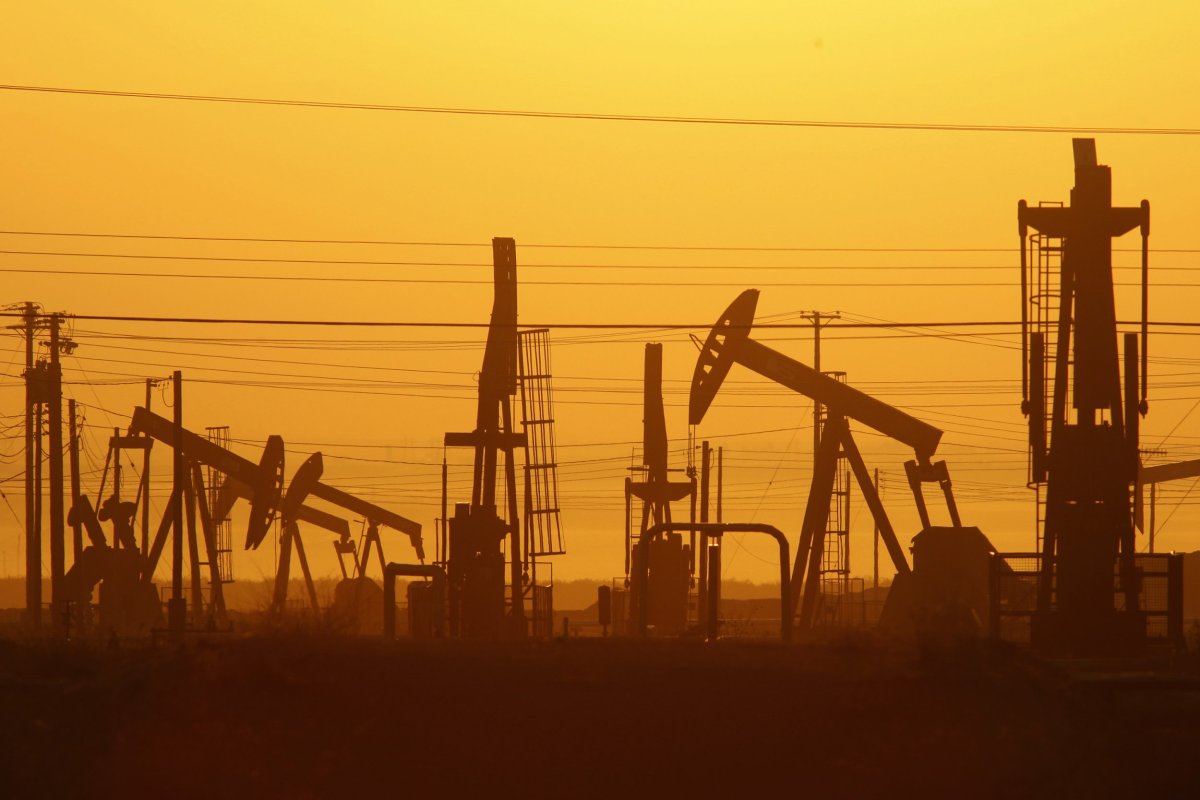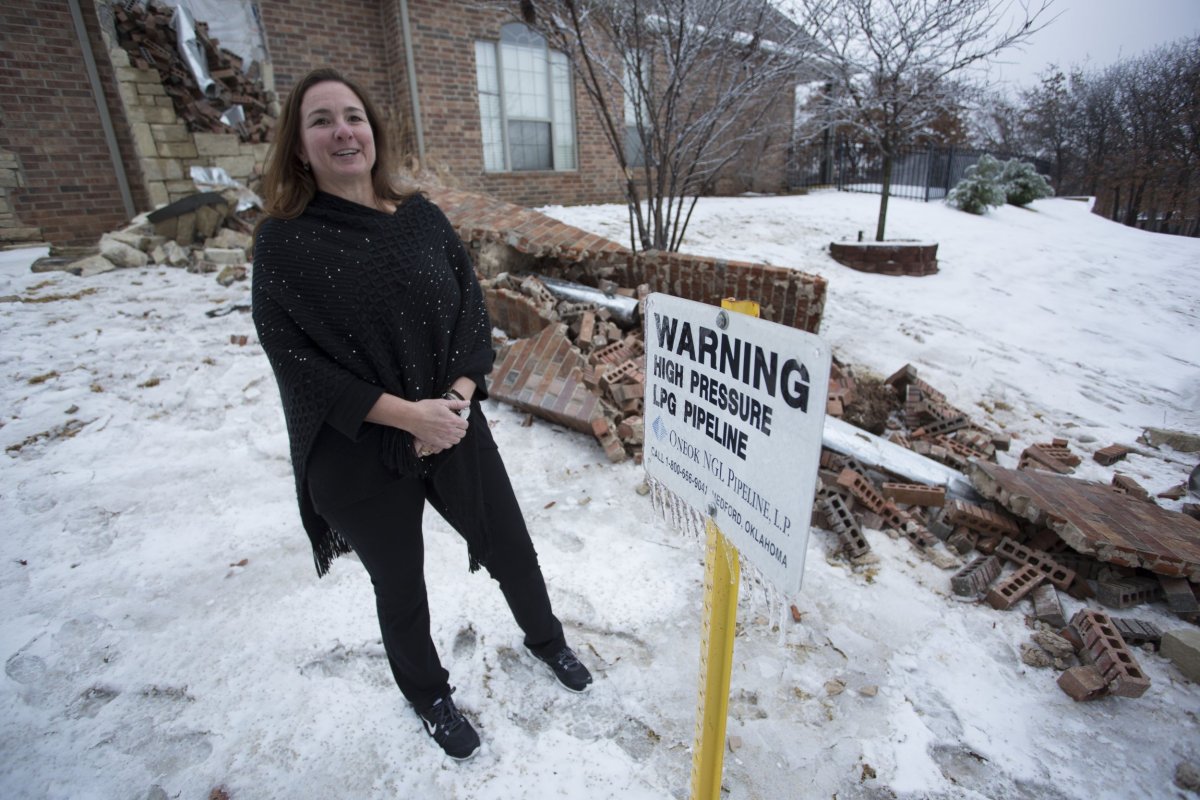
Updated | Injecting saltwater back underground in Oklahoma, a disposal method used after fracking, has been linked to a surge in earthquakes since the oil and gas boom reached the state in 2009. But a study published earlier in January in Geology reveals that efforts to reduce these dangerous injections have not reduced the most damaging earthquakes. The persistence of high-magnitude earthquakes raises further concerns about fracking and the saltwater injections that have increased because of the surge in oil production.
Toxic Ancient Saltwater
Nearly all oil wells release saltwater from underground as another product of the recovery process. This water is the "salty brine from ancient oceans that was entrapped in the rocks when sediments were deposited," according to a 2015 paper on induced-earthquakes, fracking, and saltwater injections. The water is trapped in the same porous areas of the rock as oil and gas. As oil and gas are extracted, so is the saltwater.
Although nearly all oil wells produce this briny wastewater, the rise of fracking increased the amount dramatically. Fracking, technically known as hydraulic fracturing, draws oil and gas from underground by breaking rocks from high-pressure fluid injection. And as it does, ancient, salty wastewater accompanies the more valuable resources.
This brackish water is toxic for wildlife on land. To address that problem, companies pump it back underground into deep and porous geologic formations. These injections are the most cost-effective way to dispose of the water, according to Ryan Pollyea, geosciences professor at Virginia Polytechnic Institute and State University and lead author of the new study.
An Earth-Shattering Solution
But these injections create a new problem. When it's pumped back underground for disposal, the excess liquid "lubricates existing faults," Pollyea said in a statement. The excess saltwater results in induced earthquakes, where any earthquake at all was once a rarity.
In Oklahoma, which has had an increase in fracking wells since 2009, earthquakes have surged in recent years. Magnitude three or higher earthquakes were once a rarity in the state, with one per year before 2011. In 2015, there were over 900. "It is a phenomenal thing that has occurred," Pollyea told Newsweek. The state is now the most seismically active in the lower 48, which is concerning, considering the state doesn't have extensive infrastructure that can handle the shakes.
Fracking isn't directly causing these earthquakes, said Pollyea. But recent technological advances are allowing companies to grab oil and gas from previously inaccessible reservoirs—resulting in even more wastewater that needs somewhere to go. And in Oklahoma, saltwater injection "is causing nearly all of these earthquakes," said Justin Rubinstein, a seismologist with the U.S. Geological Survey who was not involved in the study.
In an effort to stop this disturbing trend, Oklahoma Governor Mary Fallin signed a law in April 2016 that gave the Oklahoma Corporation Commission the authority to reduce the amount of saltwater being injected back into the ground—a direct effort to curb the earthquakes.
The Problem Persists
Pollyea and colleagues wanted to better understand the connections between earthquakes and saltwater disposal. To do so, they focused on the Arbuckle group, a porous geologic formation where saltwater disposal is common. They compared the locations of earthquake centers with saltwater disposal wells.

The study found a correlation between saltwater disposal and earthquakes that quickly dropped off in 2016, around when saltwater injection was reduced by 40 percent, as reported by the Associated Press. But this connection was not reduced for the more dangerous earthquakes, those registering as magnitude three or higher. In fact, two earthquakes greater than magnitude five shook Oklahoma in September and November of 2016. The study concluded that reducing these dangerous earthquakes requires that industries inject even less saltwater back underground.
The study has its critics, including the director of the Oklahoma Geological Survey, Jeremy Boak. He says that reducing how much saltwater is injected will take a longer time period to result in substantial reductions in earthquakes. The 40 percent reduction of the volume of saltwater injections, according to Boak, resulted in further declines in earthquakes in 2017.
"Once these things get started, they turn off very slowly," Boak, who's also the state's geologist, told Newsweek. "What we're seeing is the tailing off of earthquakes through time. … I anticipate a continued reduction in the rate of seismicity."
Pollyea's study also found that saltwater injections and earthquakes were correlated with each other as far as 77 miles apart. Boak took issue with that conclusion, noting that the study lumps together geologic formations that are quite different. He said if the study had taken into consideration geological differences of three different areas, the wide range of 77 miles would have likely been moot.

Unexplained Earthquakes
Individual injection wells aren't causing earthquakes, a common misconception. Rather, the collection of wells are working together deep underground in geologic formations to cause earthquakes in an area that can stretch 77 miles wide, according to the study. The processes that specifically cause the earthquakes that aren't quite understood.
"We don't know exactly how that is triggering earthquakes in different places," Pollyea said. But geologists are certain that the earthquakes and saltwater injections are connected.
Earthquakes in Oklahoma decreased again in 2017 down to around 300 magnitude three-plus earthquakes. But the current rate of earthquakes still swamps the historic averages.
The situation is improving, said Pollyea, but that improvement is like moving from gargantuan to massive. "It's beyond comprehension," Pollyea said. "There's still a long way to go."
This article has been updated to correctly reflect the university at which Ryan Pollyea is a professor.
SaveSave
Uncommon Knowledge
Newsweek is committed to challenging conventional wisdom and finding connections in the search for common ground.
Newsweek is committed to challenging conventional wisdom and finding connections in the search for common ground.
About the writer
Sydney Pereira is a science writer, focusing on the environment and climate. You can reach her at s.pereira@newsweekgroup.com.
To read how Newsweek uses AI as a newsroom tool, Click here.








